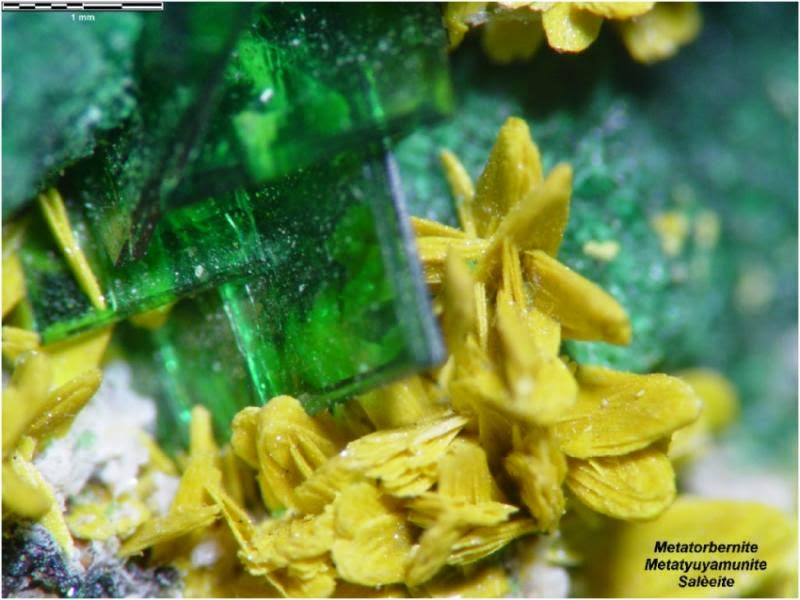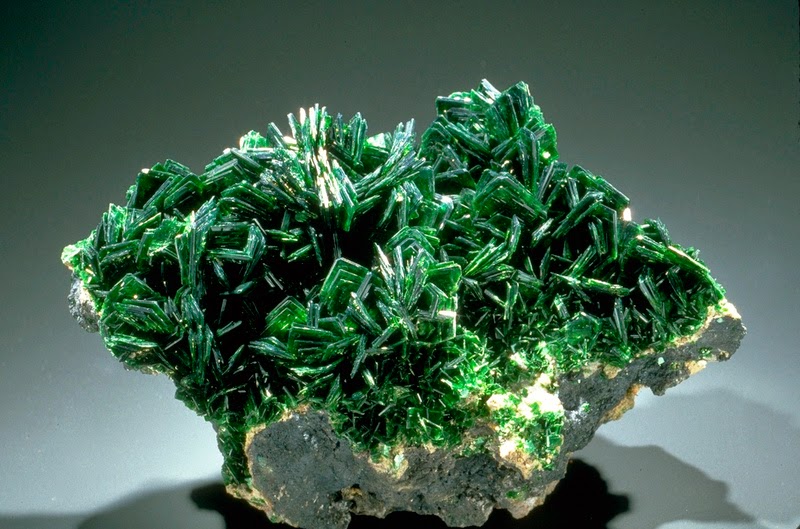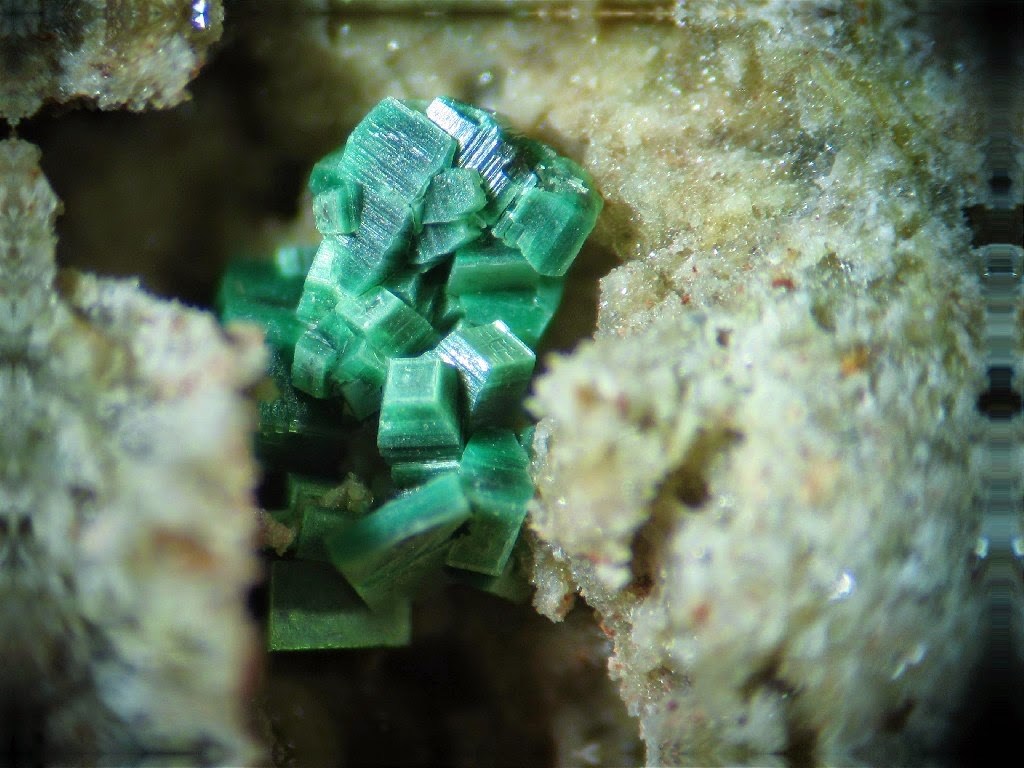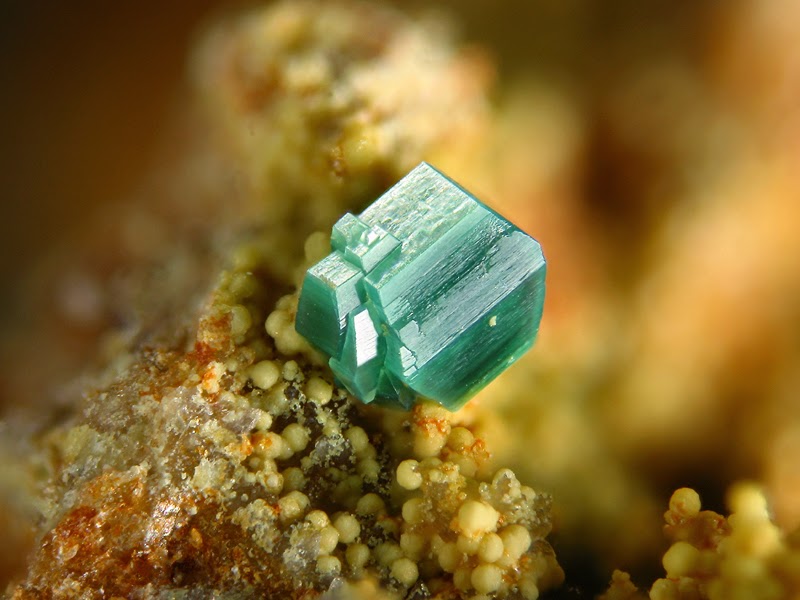
Chemical Formula: Cu(UO2)2(PO4)2·8H2O
Locality: Schneeberg, Sachsen (Saxony), Germany
Name Origin: Named as the lower hydrate of tobernite.
Metatorbernite (or meta-torbernite) is a radioactive phosphate mineral, and is a dehydration pseudomorph of torbernite. Chemically, it is a copper uranyl phosphate and usually occurs in the form of green platy deposits. It can form by direct deposition from a supersaturated solution, which produces true crystalline metatorbernite, with a dark green colour, translucent diaphaneity, and vitreous lustre. However, more commonly, it is formed by the dehydration of torbernite, which causes internal stress and breakage within the crystal lattice, resulting in crystals composed of microscopic powder held together using electrostatic force, and having a lighter green colour, opaque diaphaneity, and a relatively dull lustre. As with torbernite, it is named after the Swedish chemist Tornbern Bergmann. It is especially closely associated with torbernite, but is also found amongside autunite, meta-autunite and uraninite.
History
Discovery date : 1786
Town of Origin: SCHNEEBERG, SAXE
Country of Origin : ALLEMAGNE
Optical properties
Optical and misc. Properties : Transparent to Translucent
Refractive Index: 1,62
Physical Properties
Cleavage: {001} Perfect
Color: Light green, Dark green.
Density: 3.7 – 3.8, Average = 3.75
Diaphaneity: Transparent to Translucent
Fracture: Brittle – Generally displayed by glasses and most non-metallic minerals.
Hardness: 2.5 – Finger Nail
Luster: Vitreous – Adamantine
Streak: light green
Photos :













